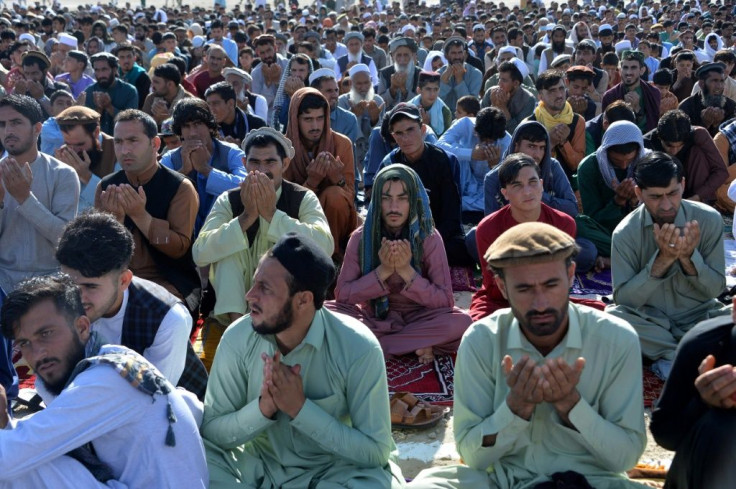Eid Al-Fitr 2022 Date, Moon Sighting: Things To Know About End Of Ramadan
Muslims across the country are preparing for the end of Ramadan to celebrate Eid al-Fitr, which falls on different dates every year depending on the Moon sighting. This year, across the world, the end of the holy month will either be on May 2 or May 3.
According to Moon sightings and announcements from Muslim community centers, such as the Islamic Center of Passaic County, the United States will celebrate Eid al-Fitr on Monday.
Eid falls on the first day of the month of "Shawwal," during which no fast needs to be observed.
Saudi Arabia is the first country to announce the date of Eid al-Fitr. Saudi authorities said Saturday they will be marking Eid on May 2. Muslims in Saudi Arabia began fasting a day before the ones in India, which is likely to mark Eid on May 3.
The Islamic Society of North America (ISNA) follows guidance from the Fiqh Council of North America, which relies on astronomical calculations of the Moon sighting in Mecca, the Saudi city that is considered the birthplace of Islam. The majority in Western countries follow Saudi Arabia's Islamic Hijri calendar to know the date of Eid.
Muslim's mark Eid by performing their traditional prayer, which consists of a sermon and a congressional prayer. On this day, they wear new clothes and exchange gifts with friends and families. Donations and gifting of items to charities are common on the day.
Common greetings during the Eid holiday include "Eid Mubarak" (meaning "Blessed Eid") and "Eid Said" (meaning "Happy Eid"). People wish each other in different ways in different regions: Ciid wanaagsan (Somalia), Mutlu Bayramlar (Turkey), Selamat Idul Fitri (Indonesia), Selamat Hari Raya (Malaysia, Brunei and Singapore) and Barka da Sallah (Nigeria).

© Copyright IBTimes 2025. All rights reserved.





















